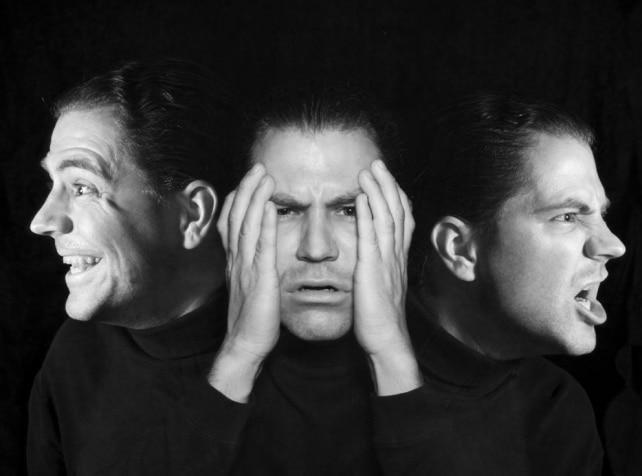In this month’s blog post we will look more closely at the distinctions between Bipolar I Disorder and Bipolar II Disorder. Both fall under the broader category of bipolar disorders—conditions characterized by significant mood fluctuations that impact a person’s energy, activity levels, and ability to function—but there are important differences in the intensity, duration, and pattern of these mood changes.
Let’s take a closer look at what sets them apart—and how each can be understood and treated with compassion and clarity.
What Is Bipolar Disorder?
Bipolar disorder involves shifts between elevated moods (mania or hypomania) and depressive episodes. These changes are not the ordinary ups and downs of life; they are clinically significant and often disrupt daily functioning, relationships, and well-being.
The difference between Bipolar I and Bipolar II lies mainly in the severity of the elevated mood episodes.
Bipolar I Disorder: The Presence of Mania
In Bipolar I, the defining feature is at least one full manic episode.
A manic episode is a period of abnormally elevated, expansive, or irritable mood lasting at least one week (or less if hospitalization is required). During this time, a person may experience:
Inflated self-esteem or grandiosity
Decreased need for sleep (feeling rested after only a few hours)
Rapid or pressured speech
Racing thoughts
Increased goal-directed activity or restlessness
Impulsive or risky behavior (such as spending sprees, or reckless driving)
Mania can lead to severe impairment in functioning and may even trigger psychotic symptoms, such as delusions or hallucinations. Because of this, hospitalization is sometimes necessary to ensure safety.
Depressive episodes often accompany Bipolar I, but even if someone has never experienced depression, a single manic episode is enough for a diagnosis of Bipolar I.
Bipolar II Disorder: The Pattern of Hypomania and Depression
Bipolar II is characterized by at least one hypomanic episode and one major depressive episode, without any full manic episodes.
Hypomania involves many of the same symptoms as mania. There is a marked change from typical behavior. However, the symptoms are less severe and do not cause marked impairment in functioning. Hypomania lasts at least four consecutive days and can often feel like a period of high productivity, creativity, or energy.
However, the depressive episodes in Bipolar II tend to be more persistent and impairing, often leading individuals to seek help for what feels like “chronic depression.”
Many people with Bipolar II initially receive a diagnosis of Major Depressive Disorder, since hypomanic phases can feel deceptively positive and may go unreported or unnoticed.
Comparing Bipolar I and Bipolar II
| Feature | Bipolar I | Bipolar II |
| Elevated Mood Type | Mania | Hypomania |
| Duration of Elevated Mood | ≥ 1 week | ≥ 4 days |
| Severity | Often severe; may require hospitalization | Less severe; typically does not cause major impairment |
| Presence of Depression | Common, but not required for diagnosis | Required for diagnosis |
| Psychosis | May occur during mania | Not present |
| Common Misconception | “Always dramatic or extreme” | “Just mood swings” – but depression can be quite serious |
Treatment and Support
Both Bipolar I and Bipolar II are highly treatable with the right combination of medication, therapy, and lifestyle support.
Medication: Mood stabilizers (like Lithium), certain anticonvulsants, and atypical antipsychotics are commonly prescribed to help regulate mood.
Therapy: Approaches like Cognitive Behavioral Therapy (CBT), Interpersonal and Social Rhythm Therapy (IPSRT), and Psychoeducation help individuals understand their triggers, regulate sleep and routines, and manage stress.
Lifestyle: Consistent sleep, stress reduction, and avoiding alcohol or drug use are vital in maintaining mood stability.
A strong therapeutic alliance also provides a safe space for clients to explore their experiences, build insight, and develop self-compassion around their diagnosis.
Final Thoughts
Whether Bipolar I or Bipolar II, living with bipolar disorder does not define a person’s worth, potential, or capacity for joy. These conditions represent patterns of mood dysregulation that, with treatment, can be effectively managed.
Therapy can help individuals move from confusion and self-blame toward understanding, acceptance, and empowerment—learning to live in partnership with their mood cycles rather than in conflict with them.
Liza Linder, MSW, LCSW, is a therapist with 30 years of experience serving the LGBTQ+ and PLWHIV communities. Liza is in person only, in our Philadelphia offices. For more information about Liza, please click on the therapist’s bios.
